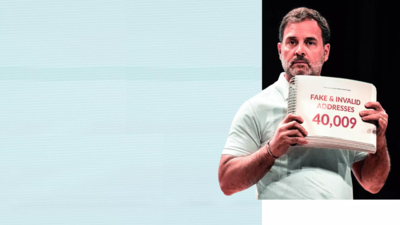Ivy League colleges are not the priciest in the US: See which universities cost even more

In a finding that challenges long-held assumptions about the cost of elite education in the United States, a new study by GOBankingRates has revealed that the most expensive universities in the country are not part of the Ivy League. While institutions like Harvard, Yale, and Princeton continue to symbolise academic excellence, they have been outpriced by a number of prestigious—but non-Ivy—private universities when it comes to the total estimated cost of attendance.At the top of the list is the University of Southern California (USC), where the total cost for a four-year undergraduate program is projected to reach a staggering $394,900. That breaks down to nearly $100,000 per year, including tuition, room and board, fees, books, and other expenses.
The most expensive colleges in the US
According to the GOBankingRates analysis, the top five most expensive colleges in the U.S. all exceed a $385,000 four-year attendance estimate. These figures reflect the “sticker price” before financial aid and scholarships are factored in, and they represent the full cost a family would pay without assistance.Here’s how the top five stack up:
- University of Southern California (USC) – $394,900
Duke University - Vanderbilt University
- Washington University in St. Louis
- Brown University
Surprisingly, only one Ivy League school—Brown University—makes the top five. The rest are private, highly selective institutions located across the U.S., known for strong academics, high tuition, and rising living costs.
Ivy League institutions: Comparatively more affordable?
Despite their elite reputation, Ivy League universities are not the costliest options. Only four Ivies made the top 10:
- Brown University – #5
- Cornell University – #6
- Dartmouth College – #8
- Yale University – #10
The remaining Ivy League institutions, all ranked outside the top 10, include:
- University of Pennsylvania – #11
- Columbia University – #14
- Princeton University – #19
- Harvard University – #23
Perhaps most surprising: Harvard, often considered synonymous with exclusivity and wealth, ranks near the bottom of the top 25 most expensive universities. This could be due to its enormous endowment, which enables the school to provide generous financial aid packages, often making it more affordable than its sticker price suggests.
Why are non-Ivies more expensive?
The reasons behind the rising costs at non-Ivy institutions are multifaceted:
- Geographic Location: Schools in cities like Los Angeles (USC), Nashville (Vanderbilt), or St. Louis (WashU) face higher costs of living, which drive up on-campus housing and services.
- Institutional Resources and Amenities: Many of these schools have invested heavily in campus upgrades, state-of-the-art facilities, student wellness programs, and global study opportunities—all of which add to operational costs.
- Lack of Massive Endowments: Unlike Ivies such as Harvard and Princeton, which have multibillion-dollar endowments that help subsidize tuition, non-Ivies may rely more heavily on tuition revenue to maintain competitiveness.
- Strong National Reputations: Institutions like Duke and USC have built powerful brands that attract top students globally—enabling them to charge premium prices.
What this means for students
The findings serve as a cautionary reminder for families evaluating college choices: prestige doesn’t always equal unaffordability. Many Ivy League schools, despite their brand power, offer robust financial aid that makes them more affordable than they appear.Meanwhile, families eyeing top private colleges outside the Ivy League should pay careful attention to:
- Net price vs. sticker price
- Merit-based scholarships
- Work-study opportunities
- Graduation rates and return on investment (ROI)
The bigger picture
With college affordability now central to the national conversation, this report underscores the urgent need for transparent pricing and wider access to aid information. The sticker shock of a nearly $400,000 education—at any institution—can be paralysing for middle-class families, many of whom fall through the cracks of traditional aid systems.Students are encouraged to use net price calculators, compare aid offers, and consider long-term outcomes, such as earning potential, alumni networks, and debt burden.TOI Education is on WhatsApp now. Follow us here.





